Please like and subscribe in youtube!
LOVE SONGS OF THE MID-60s (2)
EXTRACTS (full text here)
Like All I Really Want to Do, It Ain’t Me Babe is a song in which the narrator makes a series of denials to an unknown woman. The language is simple and direct, with little metaphorical content. Strongly worded repetition is again used to get the point over. The first two verses build into long choruses, with the third verse reiterating the message in a shorter form. The narrator accumulates reasons as to why he cannot live up to his lover’s expectations. The tone is rather similar to Hank Williams’ Cold, Cold Heart except for the fact that it is Dylan’s narrator, rather than his love object, who is being ‘cold’. The first line …Go away from my window… is the opening line of a song by the rather eccentric ‘operatic folk singer’ John Jacob Niles, which also has a slightly similar melody. At first the narrator takes a relatively gentle approach, instructing the would-be lover to …leave at your own chosen speed… He then begins to explain why he is giving her the ‘brush off’: …I’m not the one you want, babe/ I’m not the one you need… Then the build up to the chorus begins: …You say you’re looking for someone, never weak but always strong/ To protect you and defend you, whether you are right or wrong/ Someone to open each and every door… There is little ambiguity in the message. The narrator rejects his lover putting him on a pedestal and characterising him as a protector or saviour who will support her and love her unconditionally.
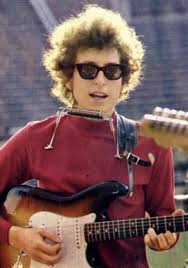
The disillusionment is completed by the emphatic chorus …But it ain’t me, babe/ No, no, no – it ain’t me babe/ It ain’t me you’re looking for babe… The repetition of ‘no, no, no’ has often been seen as a riposte to The Beatles famous refrain of ‘yeah, yeah, yeah’ in their massive worldwide hit She Loves You (1963). But if ‘yeah, yeah, yeah’ suggested an unbridled positivity and optimism, ‘no, no, no’ clearly signifies the opposite. In It Ain’t Me, Babe Dylan writes what can be considered one of his first ‘pop songs’, while turning conventional sentiments upside down. The song was soon recorded by mainstream acts like folk-rock band The Turtles, clean cut surf-rock duo Jan and Dean, pop-rock diva Nancy Sinatra and country legend Johnny Cash. Cash’s version is especially distinctive, as the song is a perfect vehicle for his powerful vocals, which reveal distinctive hints of vulnerability beneath his usual driving beat.
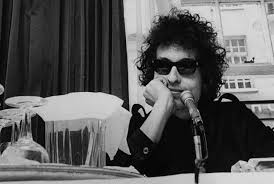
Perhaps the most affecting verse is the second, in which the narrator implores the lover, at first rather gently, to …Go lightly from the ledge, babe/ Go lightly on the ground… This is contrasted with the unequivocal …I’m not the one you want babe/ I’ll only let you down… He confronts her directly, attempting to destroy her illusions about him: You say you’re lookin’ for someone/ Who’ll promise never to part/ Someone to close his eyes to you/ Someone to close his heart… There is then a suggestion of possible tragedy: … Someone who will die for you and more… The narrator clearly indicates that he is not prepared to ‘martyr’ himself for her. The final verse more or less reiterates the message, with the narrator denying that he is prepared to …gather flowers constantly and come every time you call… Dylan uses the tropes of romantic songs to deliver a distinctly anti-romantic message. Yet there is a wistful quality here which suggests that it is possible that the narrator may actually be in love with the girl. Perhaps he is deliberately playing ‘hard to get’ by coming across as ultra-modest.
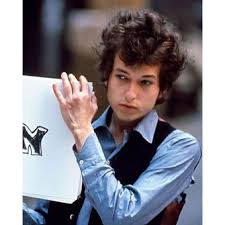
It Ain’t Me, Babe is one of Dylan’s most well known songs. Covers have appeared by Bryan Ferry, the Fleet Foxes, Sandy Denny, Joan Baez, Linda Gail Lewis, Barb Jungr, Lucy Kaplansky and many others. It became one of his first ‘acoustic songs’ to be rearranged for performance with a rock band in his ‘electric’ shows of 1965. It has since been performed by Dylan many hundreds of times. The song can be presented as a cruel rejection or a self-deprecating confession. One of the most moving performances occurs during the acoustic set in Dylan’s performance at the Isle of Wight Festival in 1969. Utilising his then-current ‘Nashville Skyline’ voice, Dylan delivers a gentle and sympathetic reading that is full of great tenderness. This is particularly evocative as the entire Isle of Wight show is presented as a quite deliberate deconstruction of the mythology surrounding Dylan himself. Although the song is a message to a lover, it has often been read – like All I Really Want to Do – as an unequivocal rejection of the political status which had been foisted on him.
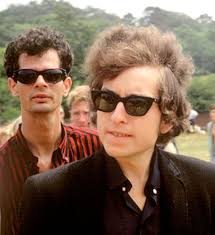
I Don’t Believe You is another song from the album which hints strongly at Dylan’s imminent transition to rock. The narrator complains throughout about a girl who he has just spent a night of passion with, yet who treats him with disdain the next day. Dylan delivers the song with great wit and comic timing, moving seamlessly through bewilderment, disillusionment and finally defiance, all expressed with acerbic wit. The self mocking tone in some ways resembles Hank Williams’ Nobody’s Lonesome for Me, in which the singer bemoans the lack of sympathy he gets when his lover rejects him. But Dylan’s song is more graphic in its description of the relationship and less self-pitying. In terms of musical structure and lyrical attitude it has some resemblance to the blues standard Worried Life Blues (especially Chuck Berry’s version, from which it appears to borrow a guitar riff) later revamped by Dylan on 2006’s Modern Times as Someday Baby.
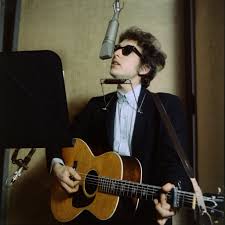
In I Don’t Believe You, the narrator seems to demand explanation, rather than revenge …I can’t understand… the song begins …She let go of my hand/ And left me here facing the wall…He complains that now he …can’t get close to her at all… His description of the night before is particularly evocative: …We kissed through the wild blazing night time… It seems that, in the throes of passion, she promised never to forget him. But now that the morning has come, she has blanked him …It’s like I ain’t here… he complains bitterly …She acts like we never have met… The last phrase, with some variation, is the song’s repeated refrain and its subtitle. The title itself never appears in the song. Dylan’s narrator plays the part of the wounded lover, who has supposedly been rejected for no reason. But his po-faced declarations of innocence are so pronounced that we are left wondering as to the veracity of his allegations. The narrator continues to assert his supposed lack of guile: …It’s all new to me, like some mystery… he protests …It could even be like a myth/ But it’s hard to think on that she’s the same one/ That last night I was with… For a moment he becomes rather wistful, declaring that …From darkness dreams are deserted… Again the playful alliteration suggests that he cannot really be as upset as he claims he is. Then he questions himself: …Am I still dreaming yet?… trying, perhaps, to convince himself that he has imagined all this. In a clever turn of phrase, he asserts that …I wish she’d unlock her voice once and talk… But such hopes are inevitably in vain.
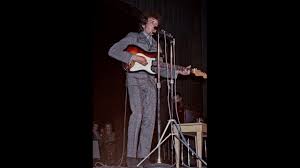
By now, it seems quite apparent that the narrator has been exploited by a girl who has shown him little respect. But he still pretends not to understand this, asking the rhetorical question, again punctuated by playful internal rhymes: …It she ain’t feeling well then why don’t she tell/ ‘Stead of turning her back to my face… Later he protests that: …If I was with her too long or have done something wrong/ I’d wish she tell me what it is, I’ll run and hide… These rather half-hearted complaints are followed by more colourful descriptions of their sexual coupling. We hear that …her skirt, it swayed as a guitar played… and that, with comical double overemphasis …Her mouth was watery and wet… Later we get more intimate suggestions: …Though the night ran swirling and whirling/ I remember her whispering yet… As we ‘cut’ between his complaints and his fond erotic memories, we get a distinct impression that the narrator is actually more ‘miffed’ than upset. There is no suggestion of ‘true love’ here. As with Spanish Harlem Incident, the focus is very much on lust.
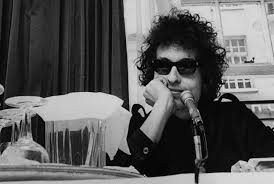
Finally he declares, as in Don’t Think Twice or One Too Many Mornings, that he will be leaving soon. He then gives the song an ingenious twist by asking the girl whether he should imitate her: …If you want me too, I could be just like you/ And pretend that we never have touched… He delivers a highly sarcastic denouement: …if anybody asks me “Is it easy to forget?”/ I’ll say, “It’s easily done, you just pick anyone/ And pretend that you never have met!”… It is thus hard to really sympathise with the protagonist. In the end he realises he has been toyed with, but boasts that this is an ‘easy trick’ that he himself could pull off. Given the somewhat whiney attitude he has displayed in the song, this is rather unconvincing. Whether or not we believe him, I Don’t Believe You takes the concept of a ‘love song’ into what, at least at the time, was largely unexplored territory. This is a song which – in the manner of contemporary songs like The Beatles’ A Hard Day’s Night and The Kinks’ You Really Got Me – is quite explicitly about sex. The song can also be seen as a kind of declaration of independence on Dylan’s part from the conventions of the kinds of love songs that were deemed ‘acceptable’ in the folk community.
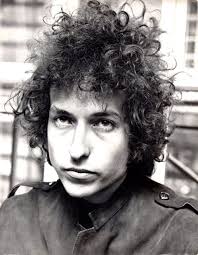
I Don’t Believe You has been a constant presence in Dylan’s set lists throughout his career. It has also been covered by many artists. There is a particularly effective version by Al Stewart, whose dryly ironic delivery suits the song to a tee. On the turbulent 1966 tour, it was the second number in Dylan’s standardised ‘electric’ set that also included pumped up takes on Baby Let Me Follow You Down and One Too Many Mornings. At the epochal Manchester Free Trade Hall show in May 1966 (released as Live 66 in The Bootleg Series), with audible barracking been thrown at him, his drawling, defiant introduction to the song runs: …This is called “I Don’t Believe You”. It used to go like this…Now it goes like THIS!… before launching into an energetic and extremely powerful full on rock version of the song. Later, after the famous (and now extremely iconic) cry of Judas! , the phrase Dylan comes out with before his incendiary version of Like a Rolling Stone is …’’I don’t believe you!”
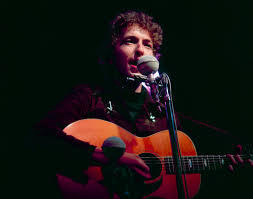
Several very distinctive love songs that Dylan composed around this time never made it onto his official albums, although these songs did tend to get ‘snapped up’ by other musicians. If You Gotta Go, Go Now is a light hearted romp which, like I Don’t Believe You, is based around a sexual encounter. As such it received several airplay bans. The song was a regular feature of Dylan’s final acoustic tours. It features on Live 64, The Bootleg Series recording of the 1964 Philadelphia Halloween show. Many of these early performances were accompanied by audience laughter. The song was rehearsed in acoustic form for the Bringing It All Back Home sessions but it soon became clear that it worked better as rock and roll. Various takes of the ‘electric’ version appear on The Cutting Edge. However, the song was omitted from the album and only released as a standalone single in The Netherlands, where it failed to make any impact. The British group Manfred Mann’s cover, which followed a similar template to Dylan’s later recordings, was a big hit for the band in the UK in 1965. In 1969 a bizarre and very jokey version with French lyrics became the only hit single for Fairport Convention.



Leave a Reply